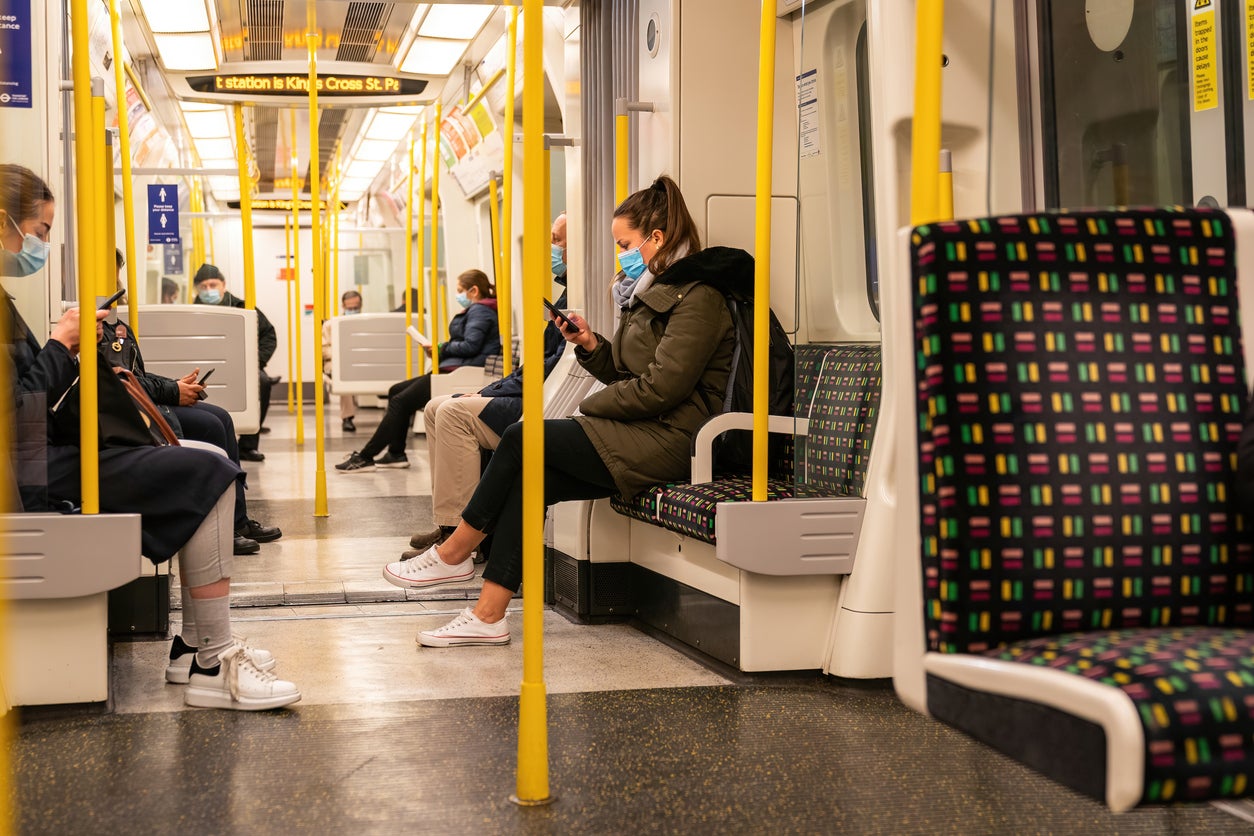Tube ‘low risk’ for catching Covid, study finds
‘Social distancing through reduced loading and high mask-wearing adherence’ were key to low transmission rates, say researchers

The London Underground and similar metro lines have been deemed “low risk” for transmission of Covid-19 in a new study.
The joint study by Leeds University, the Defence Science and Technology Laboratory (DSTL) and Manchester University found that the risk of commuters contracting the virus on underground train carriages - previously feared to be a “super spreader” environment - was “likely to be quite low”.
A team of science and engineering researchers built a computer-generated simulator based on a Tube-like carriage to demonstrate how the virus might spread from passenger to passenger.
The Transmission of Virus in Carriages model (TVC) simulated the risk of catching the virus from airborne particles, when standing two metres from other passengers, and after touching contaminated surfaces.
Using the tool to track the journey of the virus, researchers found that there was a “small chance of transmission” from ”touching a contaminated surface” and that this could be mitigated by frequent handwashing and passengers avoiding touching their face - validating the government’s “hands, face, space” messaging from 2020.
The team reported that short journey times, little overcrowding, good ventilation and high uptake of face masks during the pandemic would have resulted in a relatively low-risk environment.
“All environments where people interact together have a risk of virus transmission and public transport is no exception. Where journeys are short and not overcrowded, and the carriage is well ventilated, then the risks are likely to be quite low,” said Professor Catherine Noakes of Leeds University, who led the research.
“Wearing a face covering can significantly reduce the risk of the virus spreading, particularly as it can be harder to socially distance in a Tube or subway carriage at certain times of the day.”
However, Prof Noakes emphasised that the low risks were tied to people following distancing and mask rules, saying: “The results show that compliance with good mitigation measures is likely to be effective in reducing infection.”
The findings could influence how the UK government reacts to future highly-transmissible variants of the virus, such as the Omicron variant - this study took place before Omicron-related data could be incorporated.
It suggests that reduced capacity and mask-wearing on the tube could be kept or reinstated as future Covid spikes or new variants emerge.
Efforts to reduce passenger numbers on underground trains “could have a significant positive impact on infection risk particularly during times when community prevalence of disease is high,” said a statement from the research team.
Figures from late January show that passenger numbers on the tube had risen by just 8 per cent in the week after the UK’s “return to the office”.
During the first week of January - amid the UK’s Plan B Covid guidelines - Tube passenger levels had plummeted to around 35 per cent of pre-pandemic levels, the lowest in eight months.
Join our commenting forum
Join thought-provoking conversations, follow other Independent readers and see their replies
Comments